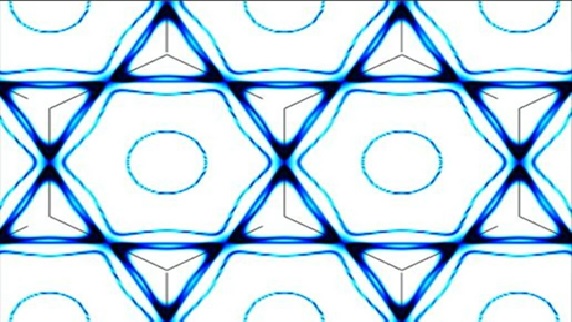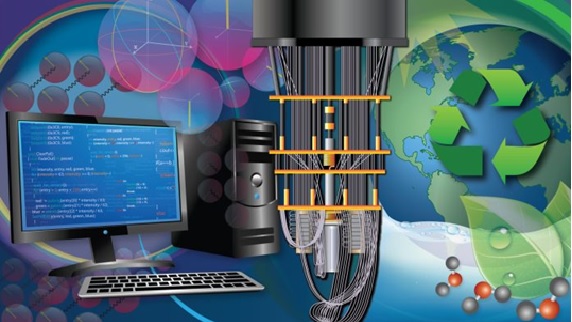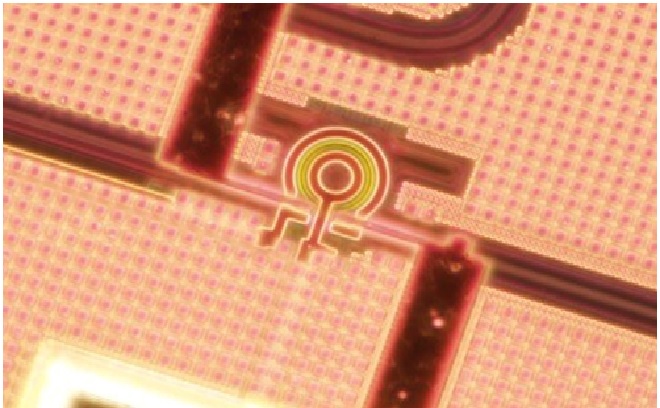When quantum particles fly like bees
A quantum system consisting of only 51 charged atoms can assume more than two quadrillion different states. Calculating the system’s behavior is a piece of cake for a quantum simulator. Yet even with today’s supercomputers it is almost impossible to verify the result. A research team from the University of Innsbruck and the Technical University of Munich (TUM) has now shown how these systems can be described using equations from the 18th century.

Figure 1. When quantum particles fly like bees
Figure 1 shows at first glance, a system consisting of 51 ions may appear simple. But even if these charged atoms can only assume two different states, there will be more than two quadrillion different configurations which the system can realize. The behavior of such a system can therefore hardly be calculated with conventional computers. Especially since once an excitation has been introduced into the system, it can propagate in leaps and bounds. It follows a statistic known as Lévy flight.
A characteristic of the movement of such a quantum particle is that, in addition to the smaller jumps, also significantly larger jumps occur. This phenomenon can also be observed in the flight of bees and in unusual fierce movements in the stock market.
Simulating quantum dynamics: A classically hard problem:
While simulating the dynamics of a complex quantum system is a very hard problem even for supercomputers, the task is a piece of cake for quantum simulators. But how are you supposed to check the results of a quantum simulator when you cannot recalculate them? Theoretical predictions suggest that it might be possible to represent at least the long-term behavior of such systems with equations such as those developed by the Bernoulli brothers in the 18th century to describe the behavior of fluids.
"Our greatest technical advance was the fact that we succeeded in individually addressing each one of the 51 ions individually," observes Manoj Joshi. "As a result we were able to investigate the dynamics of any desired number of initial states, which was necessary in order to illustrate the emergence of the fluid dynamics."
"In the near future, quantum simulators and quantum computers will be ideal platforms for researching the dynamics of complex quantum systems," explains Michael Knap. "Now we know that after a certain point in time these systems follow the laws of classic fluid dynamics. Any strong deviations from that are an indication that the simulator isn't working properly."
References:
- https://thequantumhubs.com/when-quantum-particles-fly-like-bees/
- https://www.miragenews.com/when-quantum-particles-fly-like-bees-781111/
- https://www.nspirement.com/2022/05/15/quantum-particles-fly-like-bees.html
- https://www.sciencedaily.com/releases/2022/05/220512144332.htm
Cite this article:
Thanusri swetha J (2022), When quantum particles fly like bees, AnaTechMaz, pp.44















